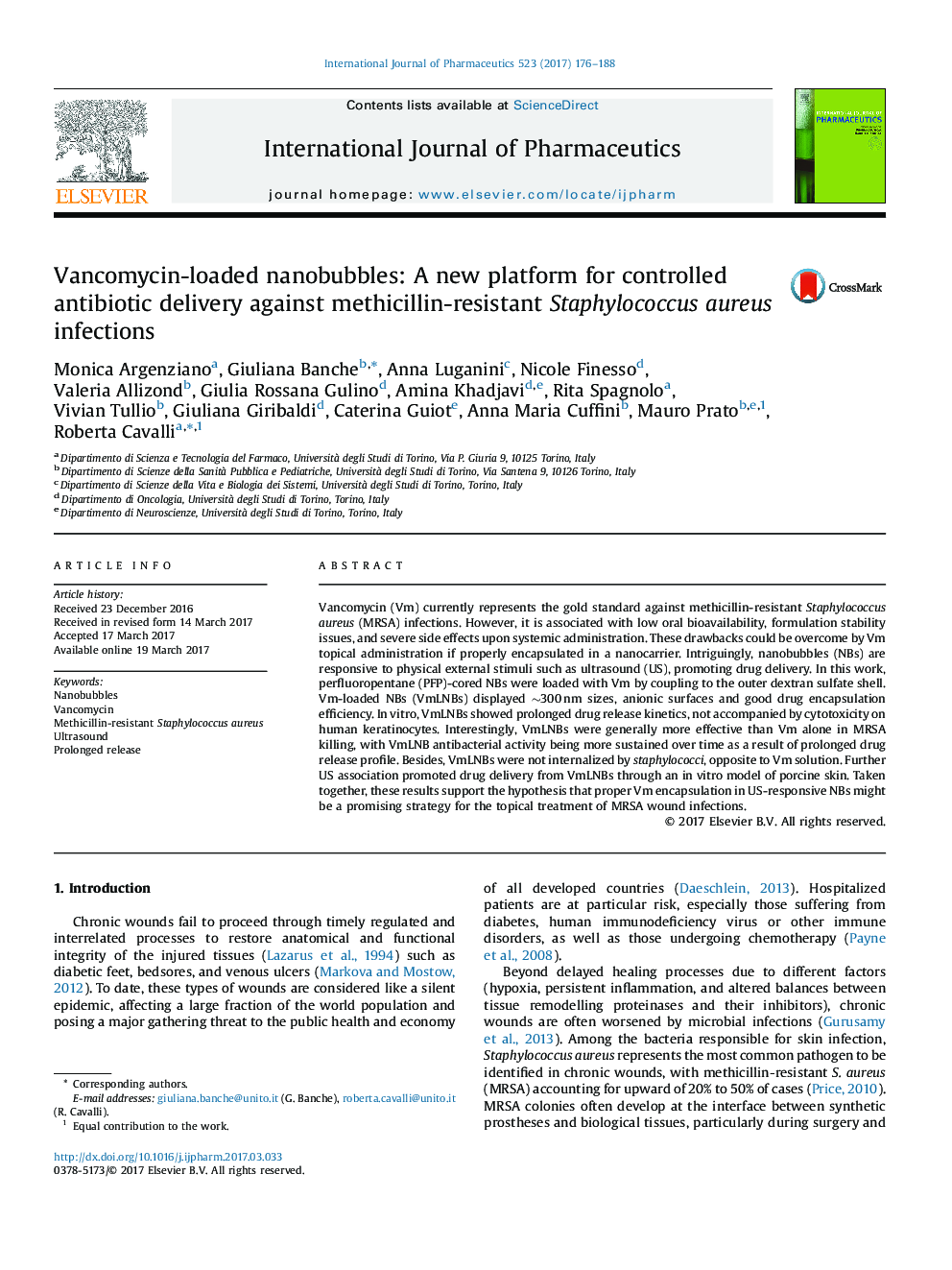| Article ID | Journal | Published Year | Pages | File Type |
|---|---|---|---|---|
| 5550536 | International Journal of Pharmaceutics | 2017 | 13 Pages |
Vancomycin (Vm) currently represents the gold standard against methicillin-resistant Staphylococcus aureus (MRSA) infections. However, it is associated with low oral bioavailability, formulation stability issues, and severe side effects upon systemic administration. These drawbacks could be overcome by Vm topical administration if properly encapsulated in a nanocarrier. Intriguingly, nanobubbles (NBs) are responsive to physical external stimuli such as ultrasound (US), promoting drug delivery. In this work, perfluoropentane (PFP)-cored NBs were loaded with Vm by coupling to the outer dextran sulfate shell. Vm-loaded NBs (VmLNBs) displayed â¼300Â nm sizes, anionic surfaces and good drug encapsulation efficiency. In vitro, VmLNBs showed prolonged drug release kinetics, not accompanied by cytotoxicity on human keratinocytes. Interestingly, VmLNBs were generally more effective than Vm alone in MRSA killing, with VmLNB antibacterial activity being more sustained over time as a result of prolonged drug release profile. Besides, VmLNBs were not internalized by staphylococci, opposite to Vm solution. Further US association promoted drug delivery from VmLNBs through an in vitro model of porcine skin. Taken together, these results support the hypothesis that proper Vm encapsulation in US-responsive NBs might be a promising strategy for the topical treatment of MRSA wound infections.
Graphical abstractDownload high-res image (206KB)Download full-size image
